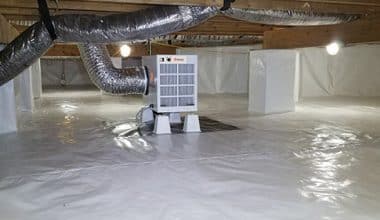When you’re looking for a new house or trying to sell your present one, determining how much to give or ask can be difficult. Given the many factors that go into calculating a house’s value, determining its value can seem to be somewhat arbitrary. Property pricing, on the other hand, is a science. This is why real estate agents do a comparative market analysis (CMA). Learn more about comparative market analysis with examples in this post.
What is a Comparative Market Analysis?
Agents analyze by looking for recently sold homes in the same region that are as similar to the subject property as feasible.
These residences, known as comps or comparable sales, are utilized to price using comparative market analysis. This method is based on the idea that you can determine the value of a home by determining how much it will cost to buy a comparable home of equivalent desirability.
What is a Comparative Market Analysis in the Real Estate (CMA)?
A comparative market analysis is a strategic real estate agent’s use to assess the worth of a given property by comparing it to similar properties that have previously sold in the same region. There are so many variables that go into deciding how much a particular property is worth. Hence, estimating the fair market value of a home can be extremely difficult.
When people think of elements that influence the price of a home, whether they are buying or selling one, they often consider location, square footage, and the number of bedrooms and bathrooms. However, the age, condition, characteristics, lot size, and so on of the property and the conditions of the local and national markets all have an impact on the value of the residential real estate.
The Three-Fold Rule
The first move for an agent planning a CMA is to locate three recently sold houses (within the past 6 months at most, but preferably 3 months). These three houses should be as identical and as adjacent to each other as possible.
After at least three comparables are chosen, each one is extensively analyzed to determine how it varies from the home under consideration. Following the itemization and pricing of the variations, the purchase price of each comparable is calculated to calculate how much it would cost if it were virtually equivalent to the subject property and sold in the current market.
Understanding the Differences Between Real Estate CMAs and Appraisals
While a comparative market analysis compares and identifies regional home values using common housing market metrics, it’s not an official home valuation. Whereas appraisers perform home appraisals to generate home valuations, licensed real estate practitioners to complete CMAs to determine the fair market value.
Despite the fact that the resulting valuation is an estimate that takes into account the goals of the seller or buyer of the property, a CMA is a dynamic method that necessitates technical awareness of the general market and how different aspects of real estate affect how much a property is worth.

By HomeLight Homes
Taking Market Conditions into Consideration
Market conditions, in general, are a wild card in comparative market analysis and price setting. That is why it is better to use homes that have sold as recently as possible to the home being priced. A strong buyer’s or seller’s market can cause CMA values to change.
For example, a rapidly gentrifying area could lack good comparables because home prices may fluctuate drastically in a matter of months. If you’re searching for a home in a rapidly appreciating area, keep in mind that even if buyers and sellers agree on a price. An appraisal will be required to decide if that price is justified to get financing.
What is involved in a Comparative Market Analysis?
While conducting a comparative market analysis is a complex method, it has distinct, manageable steps. These components work together to provide sellers and buyers with a comprehensive value estimate.
The analysis process starts with agents assembling a list of at least three identical properties that have sold in the same region in the last 3 – 6 months. Agents may choose properties that are currently listed on the market or pending if there is insufficient sales data or if the potential purchase price of a home is being measured. Expired listings may also be used to display the types of prices that are too high to draw interested buyers.
Here is a list of the different components of a CMA:
#1. Location:
The best comparable properties would be in the same neighborhood as the subject property. If there haven’t been enough recent sales in the region to complete the CMA, the agent will choose comps in a comparable area based on the quality of local schools, crime rate, noise level, proximity to amenities, and so on.
#2. Lot size:
The size of a property’s lot has a significant impact on its market value. Even a difference of half an acre can have a significant effect on the price of a home.
#3. Square footage:
Generally, the larger the building, the more valuable it is. As a result, the amount of livable square footage can be as significant as the number of rooms in the house.
#4. Property age and condition:
The year the house was constructed, as well as whether it has recently been renovated, affect the value. Newer constructions and homes with high-end materials are also more expensive. However, historically significant homes that have recently been upgraded may also command high prices.
#5. The number of bedrooms and bathrooms in a home:
The more bedrooms and bathrooms it has, the higher its worth.
Special features such as fireplaces, patios, swimming pools, garages, complete basements, and so on are also taken into account. However, note that, depending on the local market, not all special features can be increasing the home’s worth.
#6. Date of sale:
The comps chosen should have sold within the last three to six months. If the selling dates are out of date, the rates must be updated to reflect how the demand has changed. The size of inventory and changing interest rates will cause market prices to fluctuate locally or nationally.
#7. Financing and selling terms:
The form of financing a buyer uses to purchase a house, as well as the terms of sale, may have an effect on the purchase price. Buyer contingencies will be accepted if the offer price is higher. If a comparable transaction contained seller concessions, the value of the concessions must be deducted from the purchase price of the comparable. Such compromises could include the seller agreeing to cover the buyer’s closing costs. Otherwise, the seller can make repairs to the home prior to sale.
An Example of a Comparative Market Analysis
Consider a simplistic example of how a comparative market analysis might assist a consumer. A couple wants to buy a $450,000 single-family house, but they want to discuss the asking price. They request that their real estate agent conduct a comparative market analysis on the property. This is to assist them in developing a compelling offer based on current market trends.
The agent starts by collecting information about the property the couple wishes to buy and discovers the following:
- The house is on a half-acre lot in a neighborhood full of houses. The houses are constructed about the same time and with identical floor plans.
- There are three bedrooms, two full bathrooms, and one half-bathroom.
- It has a two-car garage and a fireplace in the living room.
- The 2,000-square-foot home is in excellent shape and needs no significant repairs.
- Unlike other homes in the neighborhood, this one has a finished basement.
After obtaining this information, the agent searches for comparable properties in the region. Given the size of the subdivision and the recent activity, the agent can locate three comparable properties that have all sold within the last six months. The agent starts putting together the following comparative market analysis when collecting details about the comps.
With a detailed list of the variations between the subject property and the comps, the agent approaches a consultant to obtain a rundown of the costs of each function. This is to decide if each discrepancy affects the house’s overall value. (The prices below are merely examples for comparative market analysis and should not be interpreted as the true value of any item.)
Calculation of Comparative Market Analysis
The purchase price of each comparable property is then calculated to determine how much it would have sold for if it had been virtually identical to the subject property. When changing the price, more desirable features are subtracted from the comp’s purchase price, and less desirable features are added. The cumulative changes for each compare are then determined, and the sales prices are adjusted accordingly.
The comps’ adjusted sales prices show the range in which an acceptable bid could fall: $424,200 – $442,000. The agent will then use the reconciliation process to decide the exact price that the couple will pay to buy the subject land.
The agent uses reconciliation to weigh each comparable based on how close it is to the land. Comp 1 had the most changes, so it received the least weight. Comp 2 had the fewest changes, so it received the most weight. After all, weights have been assigned, the adjusted prices are compounded by the weighted value. Afterward, the results are added to decide the best bid.
The total would then be rounded to the nearest $100 by the agent. After obtaining the couple’s approval, the agent would present the $430,900 offer to the listing agent. It’ll be citing the CMA as proof that the house is worth slightly more than $19,000 less than the asking price.
How is comparative market analysis used in financial analysis?
Comparative market analysis can be used in financial analysis to help investors make informed decisions about the potential value of an investment, and to help determine the value of a company or asset.
Can comparative market analysis be used to determine the value of a rental property?
Yes, comparative market analysis can be used to determine the value of a rental property by comparing it to similar rental properties in the same area.
What are some common challenges with comparative market analysis?
Common challenges with comparative market analysis include access to accurate and complete data, difficulty finding and comparing similar properties, and subjectivity in the analysis and interpretation of data.
How can comparative market analysis be improved?
Comparative market analysis can be improved by using more comprehensive and accurate data, and by performing the analysis with greater care and attention to detail.
How often should comparative market analysis be performed?
The frequency of comparative market analysis depends on the needs and goals of the person or organization performing the analysis, as well as market conditions and trends. However, it is typically recommended to perform a comparative market analysis at least once a year.
How does comparative market analysis impact the buying and selling process?
Comparative market analysis can impact the buying and selling process by providing valuable information about market conditions, trends, and the potential value of a property, and can help buyers and sellers make informed decisions about buying, selling, or pricing a property.
Conclusion
A comparative market analysis is an important tool for determining the worth of real estate. If you are a homeowner considering listing your home for sale, a CMA will assist you in determining an appropriate asking price. It’ll be based on what similar homes in your area have sold for on the market. If you’re ready to buy a new home, a CMA can also help you negotiate asking prices. From there you can make competitive offers.
However, keep in mind that preparing a comparative market analysis is a complicated process. It necessitates access to complete sales data as well as knowledge of local and national markets. That’s why it should be completed by a licensed real estate agent.
Competitive Market Analysis FAQs
Who may prepare a CMA?
Under section 93A-83(b), a broker may prepare a CMA for “a third party making decisions or performing due diligence related to the potential listing, offering, sale, option, lease, or acquisition price of a parcel of or interest in real property.” Rule
How is a CMA different from an appraisal?
The main difference between an appraisal and a CMA is the personnel involved. Whereas a CMA is conducted by a real estate agent, an appraisal is carried out by a licensed appraiser on behalf of the bank. Once a buyer applies for a loan to purchase your home, the bank will order an appraisal of the property.
Which is more accurate a CMA or an appraisal?
While you can’t completely predict what the outcome of an appraisal will be, you have more control over it than what a CMA will conclude. A CMA and an appraisal are different processes, but both help you to get you accurate and up-to-date information about how much your home is worth.
How do I create a CMA?
How to Create a Comparative Market Analysis
- Assess the Quality of the Neighborhood. …
- Assess the Original Listing (if Available) …
- Check Property Value Estimates on Zillow & HouseCanary. …
- Start Creating Your Preliminary CMA. …
- Get an Average Price from Comparable Listings. …
- Assess the Home in Person.
- HOUSE POOR: Best Easy Guide to Buying a House Poor Credit (+ Free Tips)
- Real Estate Business: A Definitive Guide for Beginners (+ How to start tips)
- Property Management Business: All You Need to Start From Scratch (+ a Workable Model)
- Fiscal Agent: Best Practices & Detailed 2021 Guide
- REAL ESTATE DEVELOPMENT BUSINESS: How to become a Developer and detailed steps to start a company








